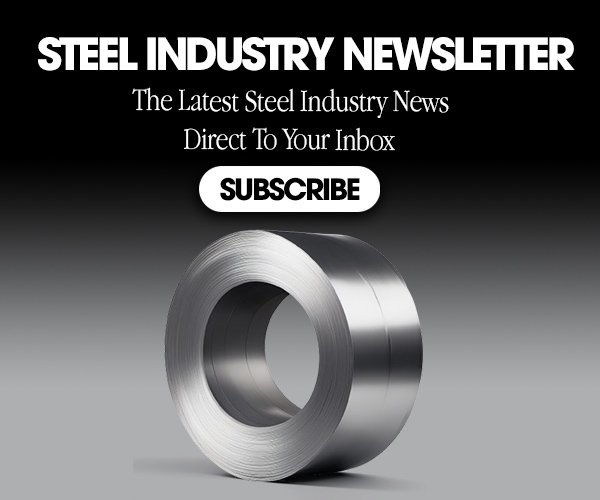Key Takeaways
- ✔️ Court rules against Trump’s tariff emergency powers.
- ✔️ $159 billion in tariff revenue faces refund risk.
- ✔️ Steel producers and manufacturers face cost uncertainty.
- ✔️ Distributors and consumers deal with pricing volatility.
- ✔️ Supreme Court appeal will shape future trade authority.
Introduction: The Court Decision That Could Reshape American Trade Policy
In a landmark legal development, the U.S. Court of Appeals for the Federal Circuit delivered a 7-4 decision challenging President Trump’s comprehensive tariff program. The court’s ruling upholds a previous decision by the U.S. Court of International Trade in New York, though it provides the administration with time to appeal to the Supreme Court.
The Trump tariffs under scrutiny include the sweeping Liberation Day tariffs imposed in April, which affected nearly all trading partners of the United States. These tariffs have generated approximately $159 billion in revenue by July—more than double the amount collected during the same period the previous year.
The legal challenge centers on the administration’s use of the International Emergency Economic Powers Act (IEEPA) to justify the tariffs. By declaring longstanding trade deficits a “national emergency,” the Trump administration attempted to implement comprehensive import duties without traditional congressional oversight. The appeals court’s ruling now questions this legal strategy.
The steel industry represents a critical case study for understanding the broader implications of this court decision. As one of the most heavily protected sectors under various tariff regimes, steel producers, manufacturers, distributors, and consumers face significant uncertainty as this legal challenge progresses through the court system.
Key Facts: Trump Tariffs Federal Appeals Court Ruling
| Category | Detail | Value |
|---|---|---|
| Court Decision | U.S. Court of Appeals for Federal Circuit | 7-4 ruling against tariffs |
| Revenue Impact | Tariff collections by July 2025 | $159 billion (double previous year) |
| Legal Foundation | International Emergency Economic Powers Act | IEEPA authority challenged |
| Timeline | Liberation Day tariffs imposed | April 2025 |
| Financial Risk | Potential Treasury impact | Justice Dept warns of ‘financial ruin’ |
| Next Step | Supreme Court appeal deadline | Administration considering appeal |
| Trade Partners | Countries affected | Nearly all U.S. trading partners |
| Legal Precedent | Lower court ruling | Court of International Trade upheld |
Key Facts: Trump Tariffs Federal Appeals Court Ruling
Understanding the Legal Framework: IEEPA and Presidential Trade Authority
The International Emergency Economic Powers Act (IEEPA) serves as the legal foundation for the contested tariffs. This legislation, originally designed for genuine national security emergencies, grants the President broad authority to regulate international commerce during declared emergencies. The Trump administration’s interpretation extends this authority to address trade deficits, arguing that persistent trade imbalances constitute a national emergency requiring immediate action.
The legal precedent for using emergency powers in trade policy has historical roots, though the scope and scale of the Liberation Day tariffs represent an unprecedented application of IEEPA authority. The tariffs apply reciprocal rates to countries based on their existing tariff levels on U.S. exports, creating a complex matrix of import duties across numerous trading relationships.
The Court of Appeals’ decision examines whether trade deficits can legitimately constitute the type of emergency that IEEPA was designed to address. The majority opinion suggests that routine trade imbalances, regardless of their size or duration, do not meet the threshold for emergency action. This interpretation could significantly limit future presidential authority to unilaterally adjust trade policy through emergency declarations.
Congressional authority over trade policy remains a central constitutional issue in this case. The Constitution explicitly grants Congress the power to regulate commerce with foreign nations, and traditional trade legislation has required legislative approval. The court’s ruling reinforces the principle that executive emergency powers cannot indefinitely substitute for congressional action in trade matters.
Legal Precedent and Future Implications
The appeals court decision could establish important precedent for future use of emergency powers in trade policy. The ruling addresses fundamental questions about the scope of presidential authority and the circumstances that justify bypassing congressional oversight in trade matters.
Historical examples of emergency trade measures provide context for evaluating the current case. Previous administrations have used various authorities to address trade challenges, but the scope and duration of the Liberation Day tariffs appear to exceed historical precedents in their comprehensive coverage of trading relationships.
The Supreme Court appeal process could take months or years to resolve, creating an extended period of uncertainty for businesses and trading partners. During this time, the tariffs remain in effect, but businesses must plan for multiple scenarios depending on the ultimate court decision.
Constitutional separation of powers principles are central to the legal analysis, as the case tests the boundaries between executive and legislative authority in trade policy. The outcome could influence how future administrations approach trade disputes and emergency declarations.
Economic Analysis: Revenue, Costs, and Market Effects
The $159 billion in tariff revenue collected by July represents a substantial sum that has implications for both government finances and economic policy. This revenue stream has become integrated into federal budget planning, and its potential loss through court-ordered refunds creates significant fiscal challenges for the Treasury Department.
Tariff revenue collection mechanisms involve complex administrative processes through U.S. Customs and Border Protection. The potential requirement to refund collected duties would necessitate identifying specific importers, calculating refund amounts, and managing the administrative burden of processing potentially millions of refund claims.
The economic modeling of tariff effects encompasses both direct and indirect impacts across the economy. Direct effects include changes in import volumes, domestic production levels, and price structures. Indirect effects involve supply chain adjustments, employment changes, and broader economic activity in related sectors.
The products affected by the IEEPA court ruling span key raw materials – particularly those critical to the U.S. steel supply chain -as well as a list of finished goods, with significant exemptions documented for strategic industrial inputs and pharmaceuticals. Below is a comprehensive table summarizing the main affected and exempt products:
| Product Category | Example Items & HTS Codes | Tariff Status | USMCA Exemption | Notes/Details |
|---|---|---|---|---|
| Raw Materials Targeted | ||||
| Iron ore | 2601.11 | Tariff unless USMCA-compliant | Exempt if USMCA | Affects US steel mills |
- Exemptions: Copper, petroleum, coal derivatives, most pharmaceuticals, and certain minerals (critical/chemical sector) are fully or partially exempted from IEEPA tariffs.
Finished Goods: Appliances such as refrigerators, washing machines, dryers, stoves, dishwashers, and wire racks explicitly appear on the new tariff lists.
Automobiles/Motors/Building Components: Broadly remain under Section 232 tariffs which were unaffected by the IEEPA ruling.
Steel Producers: Protection vs. Market Dynamics
Domestic steel producers have been among the primary beneficiaries of the Trump tariff regime, particularly through both the Liberation Day tariffs and earlier Section 232 steel and aluminum tariffs. These protective measures have created a more favorable operating environment for American steel mills by reducing price competition from foreign suppliers and enabling higher domestic pricing structures.
The court ruling creates significant uncertainty for steel production planning and investment decisions. Steel producers who have expanded capacity or made capital investments based on tariff protection now face the possibility of renewed import competition if the tariffs are ultimately removed. This uncertainty affects long-term strategic planning and could influence decisions about facility upgrades, workforce expansion, and technology investments.
Steel production economics are heavily influenced by fixed costs and capacity utilization rates. Tariff protection has enabled domestic producers to operate at higher capacity levels, spreading fixed costs across larger production volumes and improving overall profitability. The potential removal of tariffs could force producers to compete on price with international suppliers, potentially reducing capacity utilization and profit margins.
The geographic distribution of steel production facilities across the United States means that different regions face varying levels of exposure to tariff policy changes. Areas with high concentrations of steel production could experience significant economic impacts if tariff protection is removed and domestic production becomes less competitive.
Steel Manufacturers: Input Cost Pressures and Competitive Positioning
Steel-using manufacturers face a complex set of trade-offs under the current tariff regime. While tariffs have increased the cost of steel inputs, they have also provided some protection from foreign competitors who use lower-cost imported steel in their production processes. The court ruling creates uncertainty about future input costs and competitive dynamics.
The automotive industry exemplifies the challenges faced by steel-intensive manufacturers. Vehicle production requires substantial quantities of various steel grades, and tariff-induced price increases have contributed to higher manufacturing costs. These costs are typically passed through to consumers in the form of higher vehicle prices, affecting affordability and market demand.
Construction and infrastructure projects represent another significant category of steel consumption. Tariffs have contributed to increased costs for buildings, bridges, and other infrastructure projects, potentially affecting both private construction and public works initiatives. The uncertainty created by the court ruling complicates project planning and cost estimation for future construction activities.
Manufacturing competitiveness in global markets is affected by steel input costs, as companies that export finished products face disadvantages when their input costs are higher than those of international competitors. The court decision could influence the competitive position of American manufacturers in both domestic and export markets.
Steel Distributors: Inventory Management and Market Volatility
Steel distributors and service centers operate in the middle of the supply chain, purchasing steel from producers and selling to end-users. The tariff regime has created both opportunities and challenges for these businesses, affecting inventory management strategies, pricing policies, and customer relationships.
Inventory valuation presents ongoing challenges for steel distributors under the current tariff environment. Higher steel prices due to tariff protection have increased the value of existing inventory, but they have also created risks if tariffs are removed and prices decline. The court ruling adds another layer of uncertainty to inventory management decisions. Note the most recent decline in pricing from Nucor were not related to tariffs but rather a reflection of changes in input costs and demand.
The relationship between domestic and imported steel pricing affects distributor sourcing strategies. Tariffs have reduced the price advantage of imported steel, making domestic suppliers more competitive in the distribution channel. Changes to tariff policy could alter these sourcing patterns and affect distributor relationships with both suppliers and customers.
Regional distribution networks may be affected differently depending on their proximity to domestic steel production facilities and import terminals. Distributors with access to multiple supply sources may be better positioned to adapt to policy changes, while those dependent on specific supply channels face greater exposure to tariff policy uncertainty.
Steel Consumers: Cost Burden and Economic Impact
End-users of steel products across the economy bear the ultimate cost burden of tariff policies through higher prices for steel-containing goods and services. The court ruling could significantly affect consumer costs across multiple sectors of the economy, from automobiles and appliances to construction.
The pass-through mechanism of tariff costs varies across different industries and market structures. In some cases, manufacturers absorb tariff-related cost increases to maintain market share, while in others, costs are passed directly to consumers through higher prices. The extent of cost pass-through depends on competitive conditions and demand elasticity in specific markets.
Small and medium-sized businesses that use steel in their operations may be particularly affected by tariff policies due to their limited ability to negotiate prices or find alternative suppliers. These businesses often lack the scale to absorb cost increases and may be forced to reduce operations or pass costs to customers, potentially affecting local employment and economic activity.
The timing of tariff removal, if it occurs, could create both opportunities and challenges for steel consumers. While lower steel prices would reduce input costs, businesses that have made investments or entered contracts based on current pricing structures could face financial adjustments.
Market efficiency considerations suggest that tariffs create deadweight losses through trade diversion and consumption adjustments. However, proponents argue that strategic tariff use can address market failures related to unfair trade practices and support critical domestic industries during transition periods.
Industry Response and Adaptation Strategies
Business planning under legal uncertainty requires companies throughout the steel supply chain to develop contingency strategies for different court outcomes. These strategies may include diversifying supplier relationships, adjusting inventory levels, and modifying long-term contracts to account for potential policy changes.
Investment decisions in the steel sector can be particularly sensitive to tariff policy uncertainty. Major capital projects, facility expansions, and technology upgrades often require multi-year planning horizons, making policy uncertainty a significant factor in business decision-making.
The global steel market context influences how American companies respond to domestic tariff policies. International steel prices, capacity utilization rates, and trade flows all affect the relative competitiveness of domestic production and the impact of tariff protection.
Supply chain diversification strategies have become increasingly important as companies seek to reduce exposure to trade policy volatility. This includes developing relationships with multiple suppliers, exploring alternative materials, and adjusting production processes to accommodate different input sources.
Potential Outcomes and Timeline Considerations
Supreme Court review represents the next critical stage in this legal challenge, though the Court’s decision to hear the case is not guaranteed. The administration faces a deadline to file its appeal, and the Court’s eventual decision could have far-reaching implications for trade policy authority.
Interim measures during the appeal process may include continued tariff collection pending final resolution, creating additional uncertainty for businesses and trading partners. The length of the appeals process could extend policy uncertainty.
Alternative policy approaches may emerge regardless of the court outcome, as Congress could choose to address trade policy through traditional legislative channels. This could include new trade legislation, modifications to existing trade authorities, or alternative approaches to addressing trade imbalances.
The international response to the court decision could influence broader trade relationships and negotiations. Trading partners affected by the tariffs may adjust their own trade policies or pursue dispute resolution through international forums depending on the final outcome of the legal challenge.
Conclusion: Balancing Trade Policy, Legal Authority, and Economic Impact
The federal appeals court ruling on Trump’s tariffs represents a pivotal moment in American trade policy, with implications extending far beyond the immediate legal questions. The decision challenges fundamental assumptions about presidential authority in trade matters while creating significant uncertainty for businesses, consumers, and government finances.
For the steel industry specifically, the ruling creates both risks and opportunities across the entire supply chain. Steel producers face the potential loss of tariff protection, while steel consumers may benefit from lower input costs if the tariffs are ultimately removed. The timing and manner of any policy changes will significantly influence how these effects materialize.
The broader implications for trade policy extend to questions of executive authority, congressional oversight, and the appropriate use of emergency powers in addressing economic challenges. The Supreme Court’s eventual consideration of this case could establish precedents that influence trade policy for decades to come.
Economic analysis suggests that the resolution of this case will have substantial effects on multiple sectors of the American economy. The $159 billion in collected tariff revenue represents a significant sum that affects both government finances and business operations across numerous industries.
As this legal challenge progresses, stakeholders throughout the economy must navigate an environment of heightened uncertainty while preparing for multiple possible outcomes. The eventual resolution will likely influence not only current trade relationships but also the framework for future trade policy development and implementation.
SOURCES
CBS News. “A federal appeals court ruled against Trump’s tariffs. Here’s what could happen next.”
https://www.cbsnews.com/news/trump-tariffs-federal-appeals-court-rules-illegal-what-happens-next/
Editors Note: There were errors and omissions in our initial article, video and podcast that have been corrected 9/2/25 .
Check out our most recent articles below:
- Nucor’s Six-Week Price Surge: What It Signals for the Steel Market
- Nucor Increases Steel Prices Again
- Steel Industry and Manufacturing Demand: Understanding the Critical Decline in HVAC and Agricultural Equipment Sectors in 2025
- Steel Prices in November 2025: Market Dynamics, Price Drivers, and Industry Outlook
- The Dodge Momentum Index October 2025: Understanding Commercial Planning Momentum and Its Impact on Construction Spending
📬 Enjoying this article? Do not miss the next one.
SUBSCRIBE below to the Steel Industry News email newsletter to get the latest updates delivered straight to your inbox. Includes a comprehensive reporting of all key topics impacting the steel industry. 🌍The Most Recent Steel News Reports — in one easy-to-read weekly format
🔐 Annual Plan: Just $300/year – that’s 6 months free . – 💰 Best value of unbiased, timely reporting in the industry.








